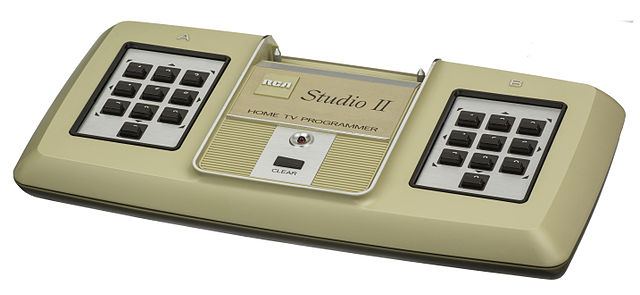
RCA Studio 2
RCA Studio II: RCA's Bold but Short-Lived Attempt at Console Gaming
Released in 1977, the RCA Studio II was an early home video game console that attempted to bring the growing video game market into the living room. Developed by RCA (Radio Corporation of America), it was notable for being one of the first microprocessor-based consoles. The Studio II used color graphics and came with a set of built-in games that used the console's hardware to create basic, blocky visuals.
One of the unique features of the Studio II was its keyboard-style controller, which lacked the traditional joystick or paddle setup that was popular in other consoles of the time. The console's game library was rather limited, with only around 20 titles, mostly consisting of simple arcade-style games like "Space War" and "Bowling". These games were basic, using monochrome graphics on a black-and-white display, and the console's overall graphical capabilities were modest, even by the standards of the era.
Despite its technical innovations and attempt to capitalize on the growing popularity of home consoles, the RCA Studio II was quickly overshadowed by more successful systems, such as the Atari 2600. Its lack of appeal to the broader gaming market, a small library of games, and limited graphical capabilities led to its short lifespan, ultimately making it a footnote in the early history of home gaming systems. Nonetheless, it represents one of the first attempts to bring video games into the mainstream and is a nostalgic piece of gaming history for collectors.
RCA executives had been kicking themselves ever since they let Ralph Baer's system slip through their fingers and into the hands of Magnavox. Because of this, RCA was busy trying to catch up with the video game console explosion of the late seventies.
The RCA Studio II was styled very much after the Pong units of the time, with one glaring exception; it had a cartridge port similar to the Fairchild Channel F. Another less important difference was that the Studio II had numeric keypads for controllers instead of the paddles that were standard among the Pong games of the era.
Both the RCA Studio II and Fairchild Channel F were doomed to failure because of the looming presence of the Second Generation Atari VCS/2600 on the horizon.

